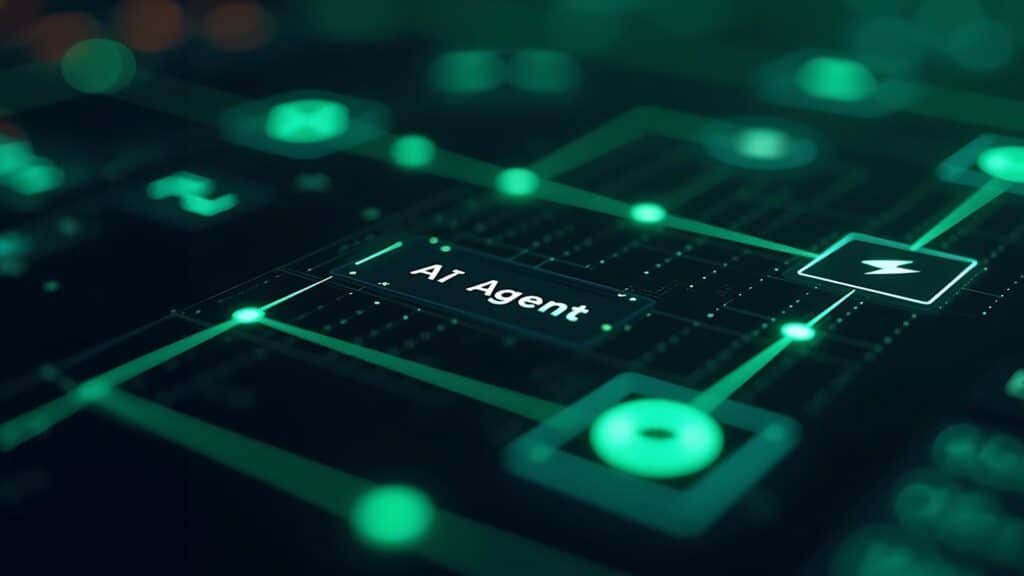The Rise of Active Intelligence
We are now firmly in an era of artificial intelligence (AI) where agents are not just answering our burning personal or business-critical questions but actually getting things done for us.
Not long ago, AI meant asking a chatbot for help on a website, or getting Siri to set a reminder. Now, a growing share of people and businesses are using AI agents that are autonomous systems that can perceive, reason, and act towards a defined goal with minimal human oversight.
There are various types of agents available to us at this time, each with their own strengths and drawbacks. Here are just a few examples:
- Customer agents that can call consumers or recognize a speaker’s intents based on conversational AI technologies
- Employee agents that can build up a knowledge center to improve troubleshooting or help legal teams to draft contracts
- Code agents that can improve software engineering productivity and quality
- Data agents that can analyse market behaviour, operational metrics and provide predictive analytics for things like improving supply chain management
- Creative agents that can create videos out of one photo or a brief written prompt
In other words, AI agents don’t just talk — they also do. And with the global market for AI agents projected to grow from around $6bn in 2024 to $52bn by 2030 according to Grandview Research, it is clear that they’re about to transform industries from logistics to finance to manufacturing.
AI Agents Are Not Just Bigger Chatbots
A chatbot waits for you to say something, then responds. An AI agent plans, decides, and then acts. They will often do this by integrating with multiple APIs, enterprise systems, and real-world sensors, which is why their output is becoming strong enough to be useful at a wide scale.
But here’s the catch: these agents are hungry for resources. They might:
- Run thousands of LLM queries per day
- Process continuous streams of sensor and user data
- Need to respond in milliseconds, not seconds
In high-stakes environments — like running a smart factory in Stuttgart or keeping the UK’s energy grid stable — speed and reliability aren’t just nice to have but essential for survival.
The Latency Wall: Why the Cloud Isn’t Enough
Centralized hyperscale data centers are powerful, but physical distance to the end user impacts real-time performance. For an AI agent making split-second decisions, every millisecond of latency counts:
- A 150 ms delay might not matter in a chatbot, but in real-time translation, it’s the difference between smooth and awkward.
- Data regulations in countries like Germany and Switzerland mean you can’t always send sensitive data back to a faraway cloud region.And let’s not forget cost. Shuttling data back and forth to the cloud racks up bandwidth and inference charges, especially for tasks that could be handled locally.
The Edge: Where AI Agents Come Alive
AI-ready edge data centers solve these challenges facing managers and users of agents by bringing compute power closer to the point of action:
- Keeping inference close to where data is generated enables the ultra-low latency needed for real-time action and decision-making
- Being closer to the customer reduces unnecessary data transfers, meaning GPU usage is optimised and costs are kept down.
- Running workloads within the borders of a country or jurisdiction ensures data sovereignty
Imagine a retail AI agent in Paris dynamically adjusting store pricing every minute based on foot traffic, weather, and competitor promotions. Without edge infrastructure, those split-second updates simply aren’t possible.
Edge AI in Action: Industry Examples
The boom in AI agents is global and spans a growing number of industries. Below are key examples of how specific sectors, in which certain European countries excel, are using edge AI technology to boost efficiency and productivity:
- Manufacturing (Germany): AI agents monitoring industrial machinery detect micro-anomalies and trigger maintenance before breakdowns — all processed at the edge for sub-second reaction times.
- Financial Services (Switzerland): Autonomous compliance agents review transactions in real time, meeting strict data locality laws while reducing fraud risk.
- Transportation (UK): AI-powered route optimization for last-mile delivery runs on edge GPUs, reacting instantly to traffic, weather, and demand changes.
- Retail (France): In-store AI agents adjust digital signage and promotions dynamically, based on shopper demographics and in-store behaviour.
The Next Computing Model for AI
The future of AI isn’t just about building bigger models—it’s about enabling billions of intelligent agents to act in the real world. And those agents need a new kind of infrastructure: distributed, high-performance, and as close to the user as possible. That’s what the edge is all about!
At nLighten, we’re building an AI-ready edge data center platform to serve as the foundation for AI agents. Whether you’re piloting a single AI agent or deploying thousands across multiple European cities, we deliver the low latency, local compliance, and power & cooling capacity needed to do so effectively.
Ready to bring your AI agents to life at the edge?
Let’s talk about how we can power your next generation of autonomous intelligence — right where your customers are.




